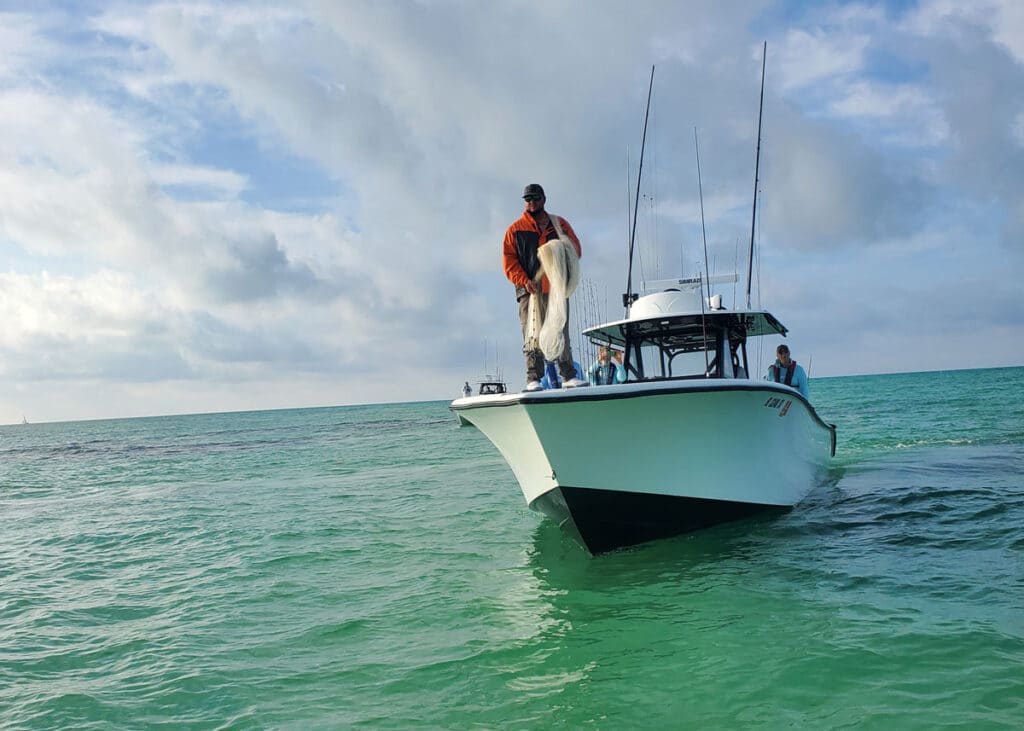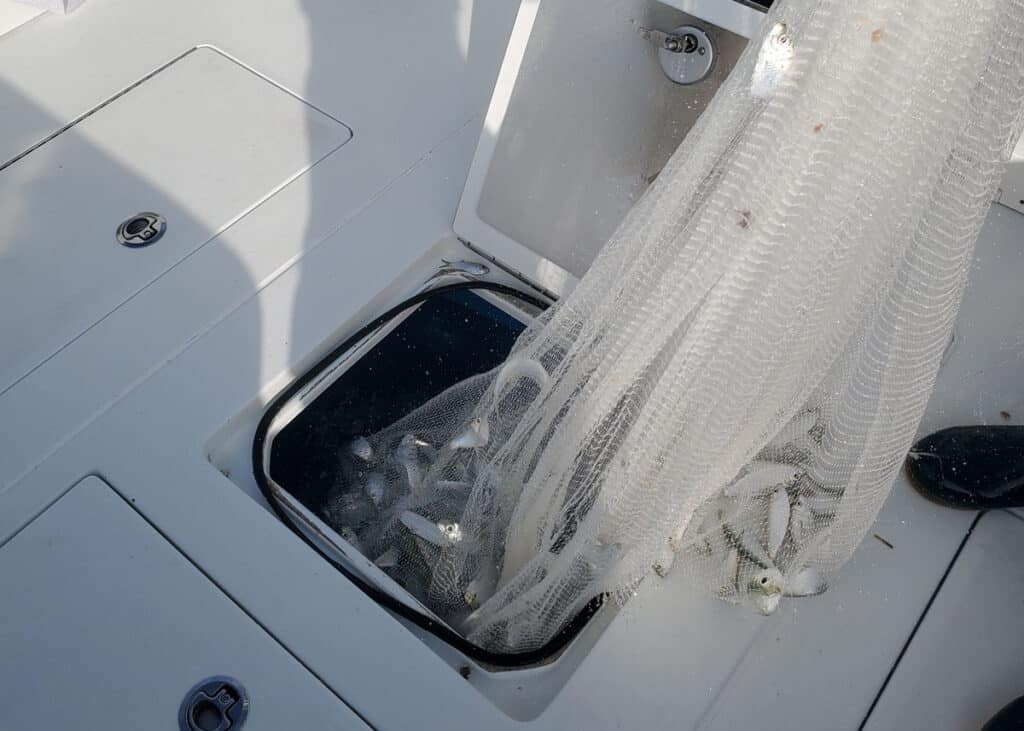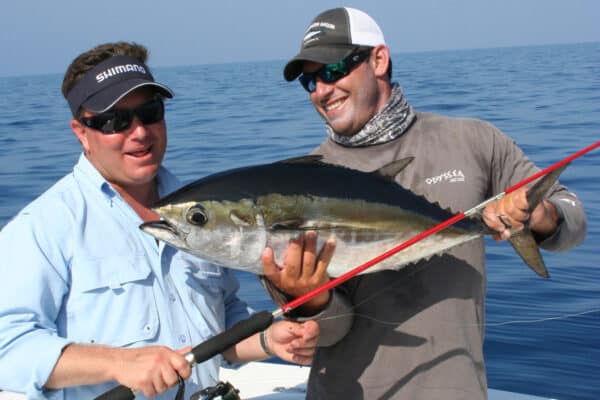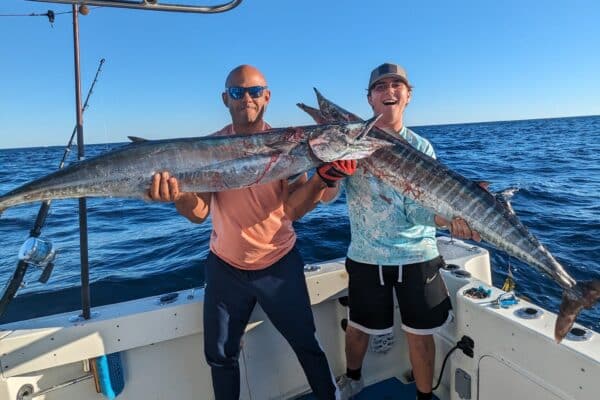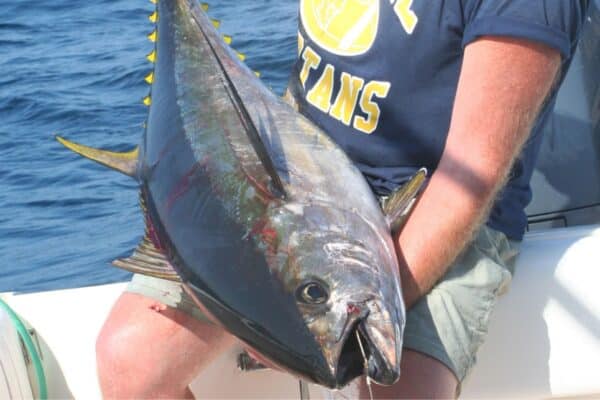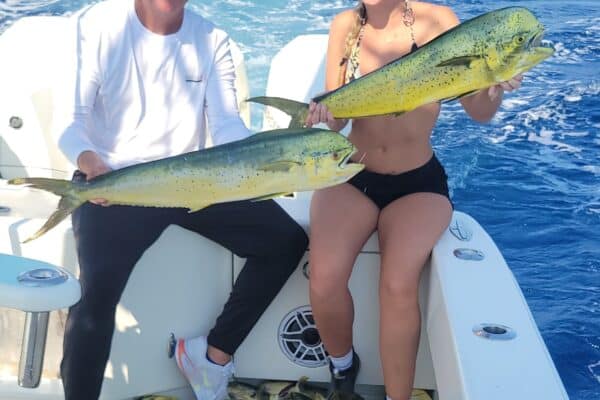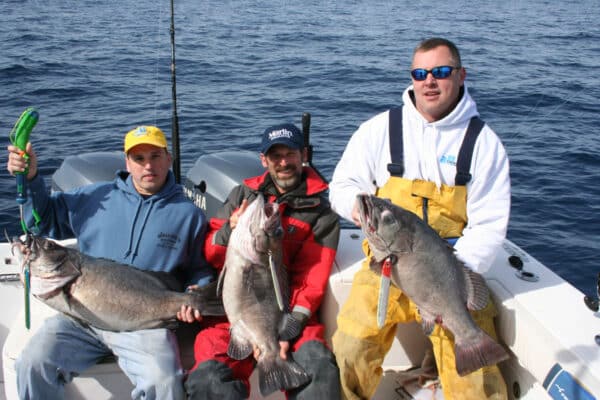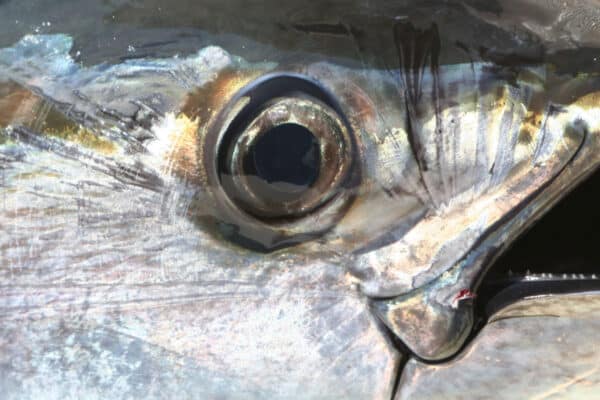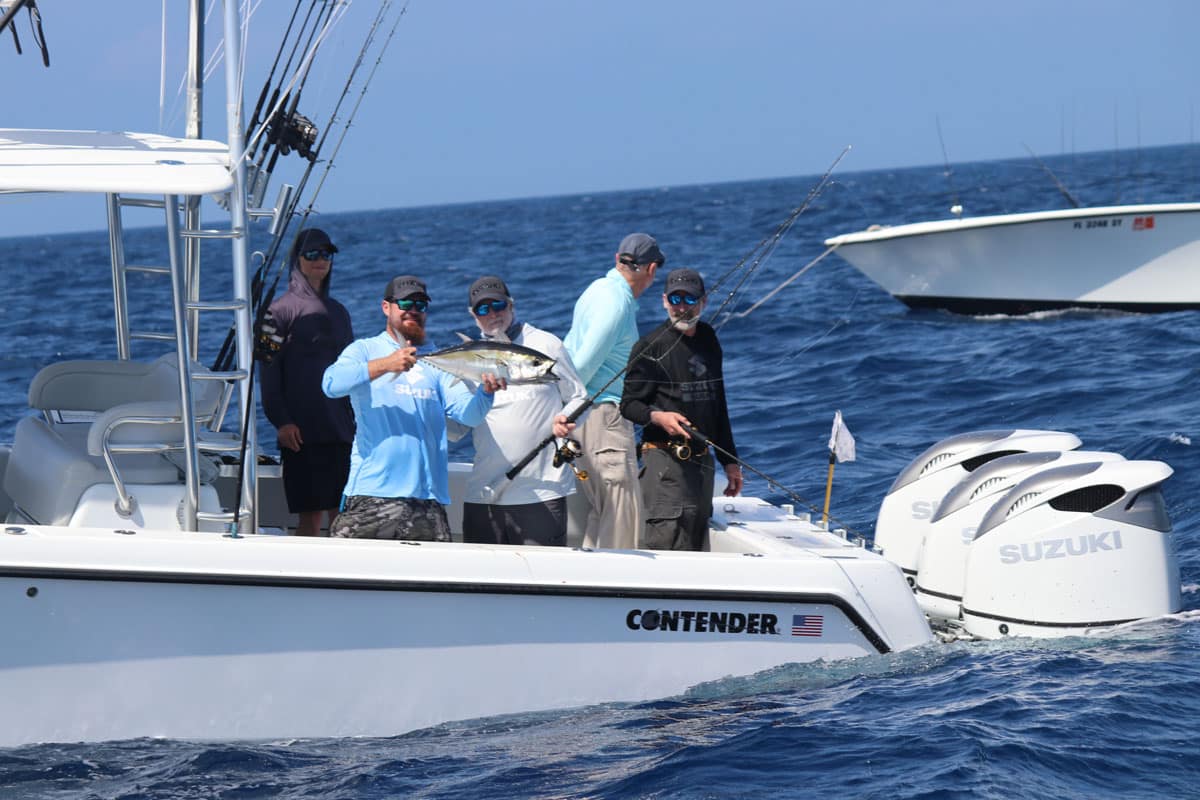
What’s the secret to effectively live-baiting blackfin into a frenzy? We spent a day with three top Keys captains and found out.
Blackfin tuna fishing can be fast and furious at times, but at others… well, that’s fishing. If you want to target blackfin in specific and catch ‘em until your arms ache, few places give you a better shot than Key West. And if you need a guide to take you to the fish few can do it as reliably as a Trosset. Any Trosset.
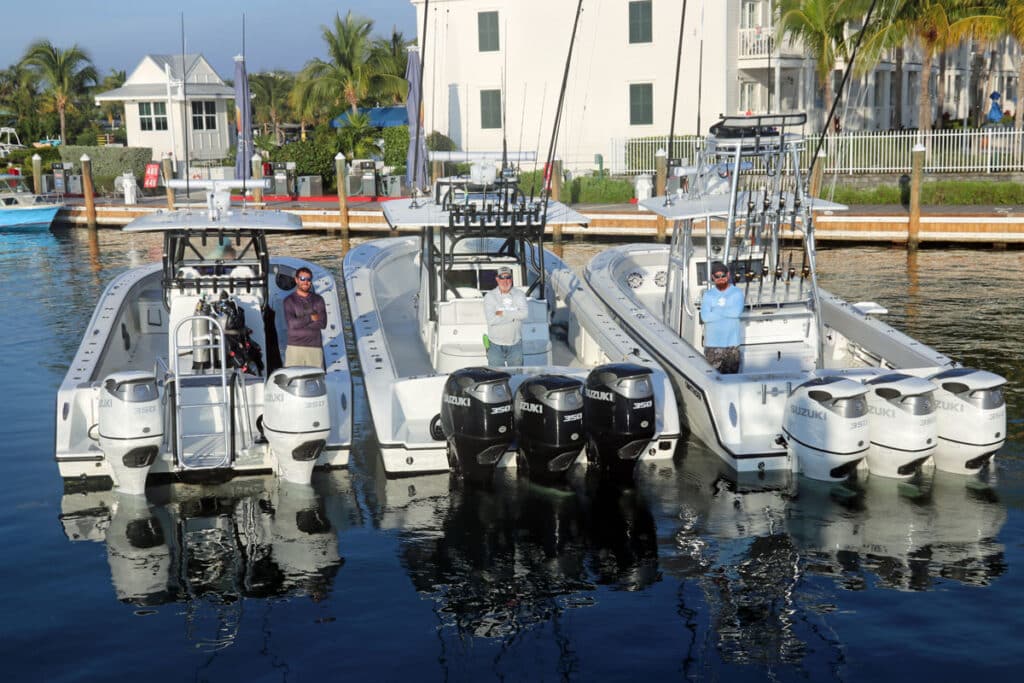
Captain RT Trosset has been guiding in the waters offshore of Key West since 1975. His son Chris followed in his fishing footsteps, and though his son Robert runs a dive operation as opposed to angling on a daily basis, no one’s going to accuse him of coming up short in the fishing department. Walk down to the dock of Ocean’s Edge Marina towards any one of their three boats and you’ll find all of them, moored side-by-side. And the last time we did so it was with the intent of catching those blackfin — here’s what we learned boiled down into five tuna fishing tips.
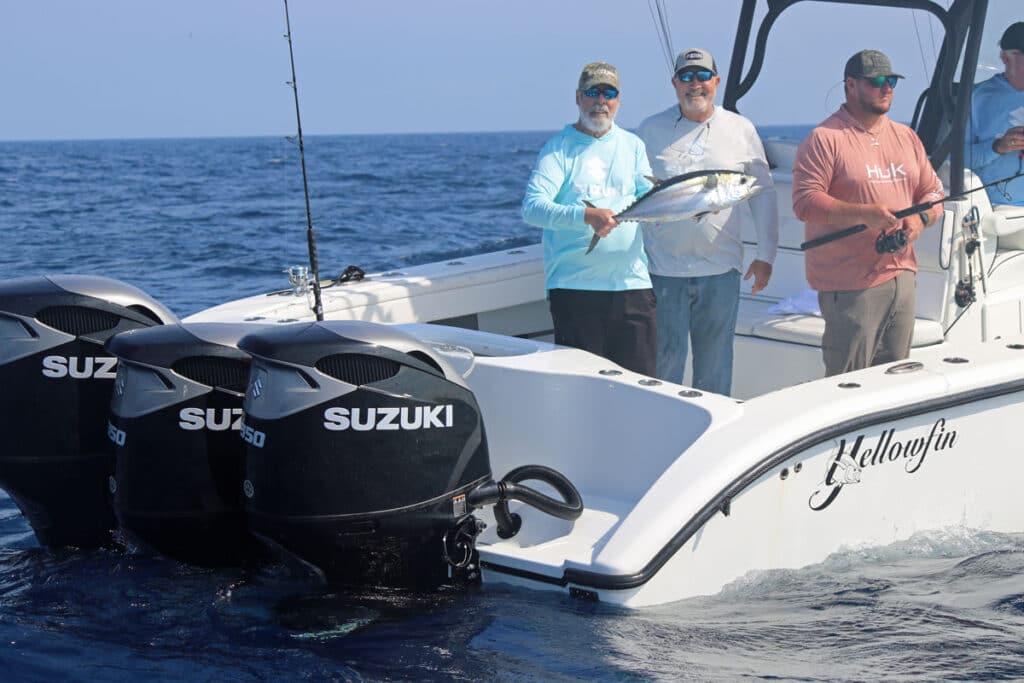
Live-Baiting Blackfin Basics
Before we put those tips into play let’s get the basics down pat. Spinning rigs or conventional gear will work, rigged with 30-pound braid and a few feet of 30- to 50-pound fluorocarbon leader. Go lighter to get more bites, but when the fish are eating hard the heavier leader will make chafing off less likely. Hooks should be in the 4/0 to 6/0 range and using an inline circle is particularly important with lighter leaders to help reduce that chafing. Also note that using lighter gear risks extending the fight, which often means a shark steals your prize. Pilchards get hooked through or just above the nose as opposed to being jaw-hooked, which lets them live longer.
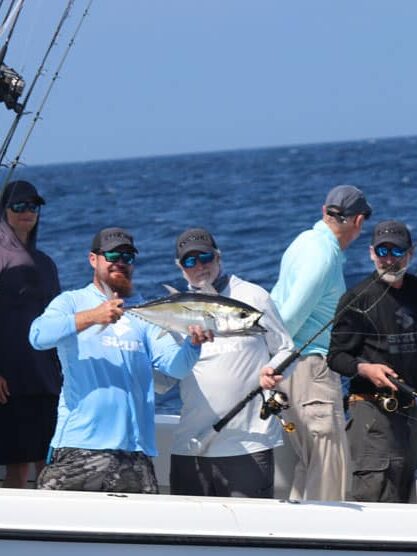
Live Baiting Blackfin Tips
Tip Number One – catch lots and lots of live bait, then catch some more. And then more, more, and more. In fact, we spent hours just throwing the cast net. When the in-deck livewell was crowded tail-to-fin with pilchards, we started in on the transom wells. And we didn’t stop until those live wells were completely plugged with baits.
Tip Number Two – Get over fish-attracting structure. Off Key West that generally means heading for one of the ledges dropping off into deep water, though remember that when you’re offshore, temperature breaks count as structure, too. Using a satellite service like SatFish, which shows high-resolution temp changes along with bottom contours, you can pick out prime positions where temp breaks and the ledges intersect.
Tip Number Three – Shovel the livies over the side in mass quantities. Each Trosset, with their boats separated by no more than 70 or 80 yards, scooped out full nets of pilchards and threw them off the back of the boat over and over to get things started. With at least six or seven dozen in the water our hooked baits then went into the drink, followed by several more scoops of livies. As the baits were freelined out, every few minutes another scoop or two went over. The fish then reformed into a school behind the boat, and at times blackfin began busting on them in a frenzy.
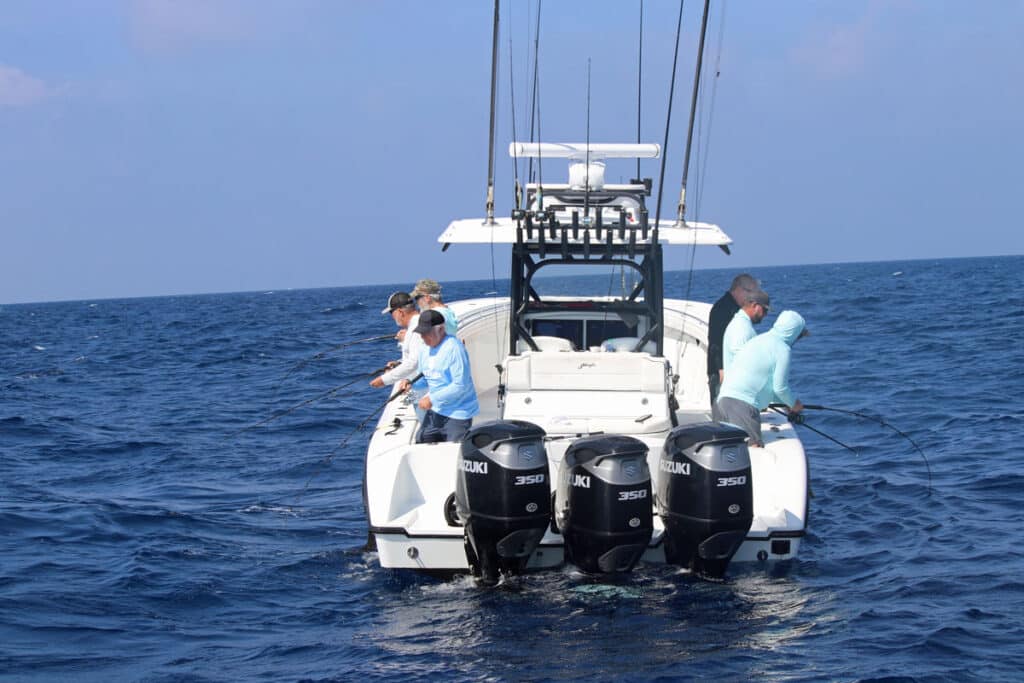
Tip Number Four – Create a few “spinners.” Every third or fourth scoop of bait gets special treatment; instead of merely being tossed into the water, they’re thrown with a fair amount of force against the outboard cowl. The trick is using just the right amount of oomph. You don’t want to throw them hard enough to completely stun or kill them, but you do want them to bounce their noggins hard enough to injure them so they pinwheel in circles right on the surface — which drives the blackfin utterly berserk.
Tip Number Five – Freeline your baits until at least half the spool of line is gone. Using a 6000 series spinning reel spooled with 30-pound braid, that can mean letting out somewhere around 250 yards of line before pulling the bait back and trying again. You’ll be tempted to crank it back up after five or so minutes but resist the temptation, and let it go three times as long. One exception: if you see the fish begin to bust close to the boat and believe your bait has drifted back well beyond them, reel back in post-haste.
Okay: ready to bloody up those decks with the blackfin? Gather your gear. Check SatFish for temp breaks on the ledges and pick your destination. Get out your cast net and throw it, throw it, and then throw it again. And again, and again, and again.

